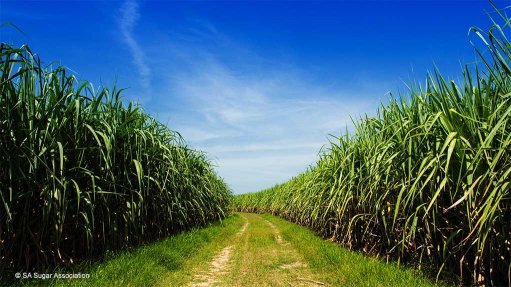
South African sugar cane field
Photo by: SA Sugar Assocation
The Bureau for Food and Agriculture Policy (BFAP) on Tuesday highlighted, in its latest 'Food Inflation Brief', that South African food and non-alcoholic beverage (NAB) inflation (hereafter, shortened to food inflation) last month increased by a full percentage point, in month-on-month (m-o-m) terms. In year-on-year (y-o-y) terms, it was up 14%. This figure of 14% was almost exactly twice March’s headline consumer price index (CPI) inflation figure of 7.1%. Food inflation contributed 2.4 percentage points to the y-o-y CPI headline inflation figure (and 0.2 percentage points to the m-o-m CPI headline inflation of 1%).
This was against a backdrop of local y-o-y CPI index increases of 8.1% for fuel and 8.2% for electricity and other fuels, while the rand:dollar exchange rate depreciated from R14.99:$1 in March last year to R17.92:$1 in March this year. And, of course, there were the disruptive and damaging effects from the scheduled rotating power cuts, known and loadshedding, which BFAP described as “persistent & severe”. These developments offset the global declining trend in food prices: the United Nations Food and Agriculture Organisation’s Food Price Index last month recorded a 20.5% y-o-y drop in oils, cereals, dairy and meat prices, and a 2.1% m-o-m decrease in cereals, oils and dairy prices.
In March, in South Africa, the food categories which suffered the highest y-o-y inflation were vegetables (20.5%), bread and cereals (20.3%), oils and fats (16%), dairy and eggs (13.6%), fish (10.7%), sugar-rich foods (also 10.7%), meat (10.6%), NAB (10.3%) and fruit (5.2%). In m-o-m terms, the highest inflation was recorded for vegetables (3.8%), dairy and eggs (2%), sugar-rich foods (1.9%), NAB (0.9%), bread and cereals (also 0.9%), fruit (again, 0.9%), while meat recorded no inflation at all (0%) and fish saw deflation of 0.6% and oils and fats deflation of 0.7%.
There were some commonly purchased food items that saw y-o-y inflation last month of 30% or even more. These were maize meal, beef (fillet and sirloin), onions and peppers. Food items with y-o-y inflation in March of from 20% to 20.9% were wheat flour, pork (ham), chicken (giblets), apples, pineapples, carrots, beetroot, potatoes, and Ceylon tea. Inflation from 10% to 19.9% was recorded for bread, pasta, baked goods, breakfast cereals; beef (brisket, stewing meat, rump steak, T-bone and mince); pork (bacon, chops, ribs); mutton and lamb (offal, rib chops, neck); chicken (individually quick-frozen, or IQF, pieces, fresh pieces, frozen non-IQF pieces); fish (canned pilchards, frozen fish fingers); milk, cheddar cheese, yoghurt; plant oils; avocados; lettuce, tomatoes, cabbage, pumpkin, spinach, broccoli, sweet potatoes, cucumber, mushrooms, cauliflower; canned baked beans; various sugar-rich foods; and coffee, fruit juice, and mineral water. Inflation from 6% to 9.9% was experienced by beef (chuck), pork (fillet), mutton and lamb (stewing meat), fish (canned tuna, frozen hake), powdered milk, margarine, peanut butter, bananas, granular sugar, rooibos tea, and fizzy drinks. Several food items registered y-o-y deflation in March. They were rice, beef (offal), mutton and lamb (leg), oranges, and papayas.
The price of the BFAP’s Thrifty Healthy Food Basket (THFB) increased by 15.3%, or R474, y-o-y, and by 1.8%, or R62, m-o-m. The THFB is composed of a nutritionally-balanced selection of 26 food items from all the food groups, and is designed to feed a family of two adults and one older and one younger child for a month. Assuming a family income of two minimum wages, plus child grants, plus the children benefitting from school meals, in March purchasing a THFB would have required 31% of the family’s total income.
“BFAP expectations are that food price inflation [in South Africa] should ease in the second half of the year, as lower commodity prices start to filter through to the retail market and high base effects will also start to come into play from May onwards,” it concluded.